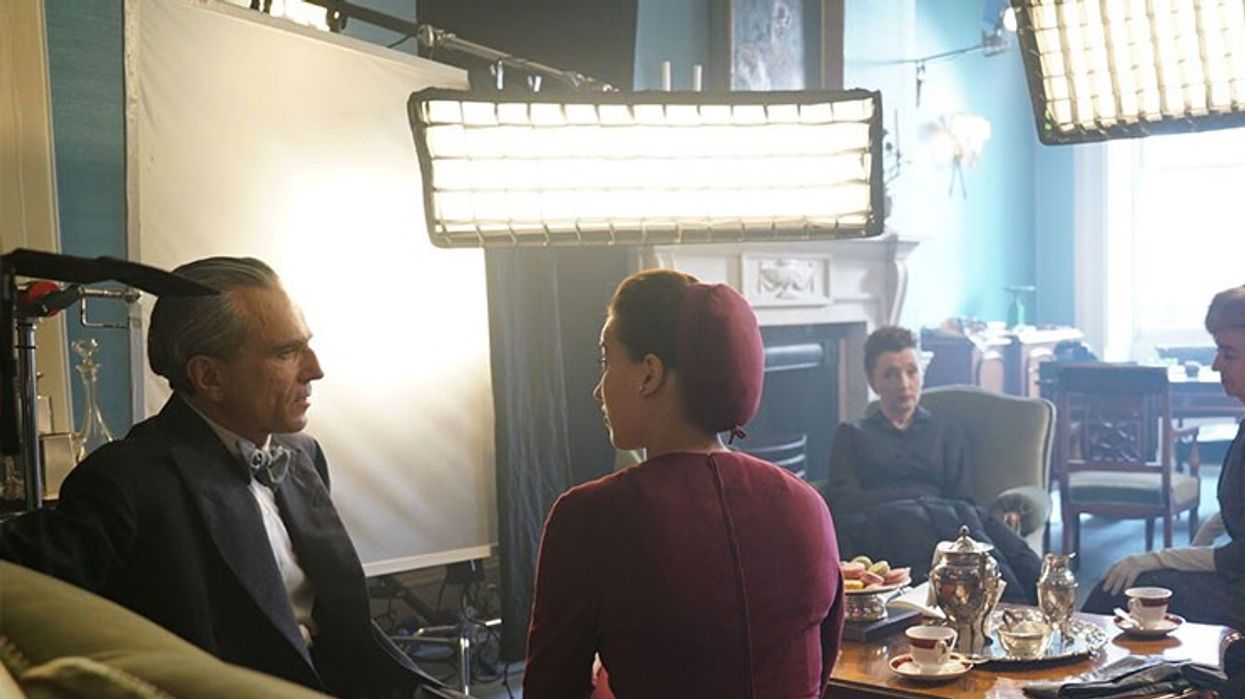Where Did the 'Phantom Thread' Look Come From? Let PTA Tell You (in Great Detail)
Ever wanted to know how PTA uses his screen tests?

When you're prepping a movie, a director wants to decide how it'll be shot and which lenses will give the look and feel desired. Sometimes the best way to multitask the acting and the shooting is to conduct screen tests. They allow you to see the actor's chemistry, practice lines, and really nail the visuals you want.
It seems like Paul Thomas Anderson did all that and more while making Phantom Thread. His commentary on the screen tests gives us a very accurate display of artistic intention: for Anderson and his team to determine the final look of the film. “We were testing different film stocks and costumes and wallpapers and makeups and things up until about a week before we started shooting,” he reveals in the clip.
Listen below and let's talk after!
In an Indiewire piece where they talked to PTA's long-time gaffer Michael Bauman and camera/Steadicam operator Colin Anderson, we know that PTA's motives in shooting Phantom Thread were to make sure it was dirtier and like the 18th Century. Not polished and refined.
“One of the first things he said was, "Look, this cannot look like The Crown,” said Bauman. “That was a big thing. When people think of a period movie it becomes this beautifully polished, amazingly photographed – I mean The Crown looks beautiful – but super clean, gorgeous light and he was clear it couldn’t look like that.”
So how do you solve that problem?
It's called "pushing" and it involves slightly underexposing the image in the development process so the stock becomes more sensitive and it increases the grain and texture of the image.
You also needed to work with specific lenses. PTA collaborated with his team to make sure what happened in the camera tests were reflected in the whole movie.
“Paul had spent a lot of time with the lens guys to come up with a combination of lenses that had a lot of texture to them,” said Bauman. “They had imperfections to them and then we did a lot with lo-con filters, which lowered the contrast. Now that’s generally the opposite of what most people try to do. Most people try to have nice rich black – a very nice velvety type of feeling in the blacks – and that was no bueno for this film.”
Check out the final decisions below!
Phantom Thread Tech Specs
- Aspect Ratio: 1.85: 1
- Camera: Panavision Panaflex Millennium XL2, Panavision Ultra Speed Z-Series MKII Lenses
- Laboratory: Cinelab, London, UK (processing: 35 mm dailies), FotoKem Laboratory, Burbank (CA), USA (processing)
- Negative Format: 35 mm (Kodak Vision3 200T 5213, Vision3 500T 5219)
- Cinematographic Process: Spherical
- Printed Film Format: 35 mm (Kodak Vision 2383), 70 mm (blow-up) (Kodak Vision 2383), D-Cinema
What do you think of the aesthetic of Phantom Thread? Do you think a more polished look would've changed the film at all? Let us know your thoughts in the comments.











